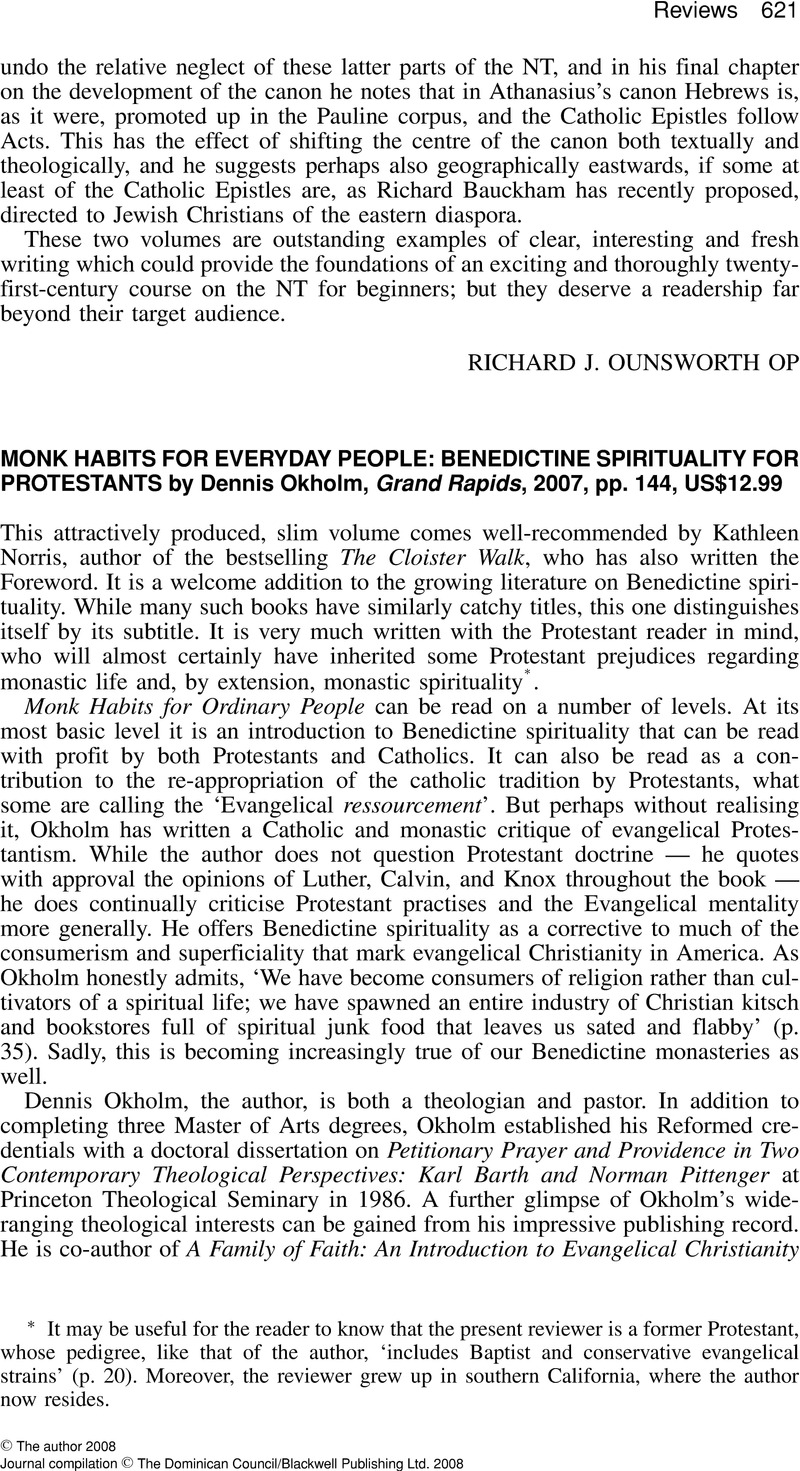No CrossRef data available.
Published online by Cambridge University Press: 01 January 2024

* It may be useful for the reader to know that the present reviewer is a former Protestant, whose pedigree, like that of the author, ‘includes Baptist and conservative evangelical strains’ (p. 20). Moreover, the reviewer grew up in southern California, where the author now resides.